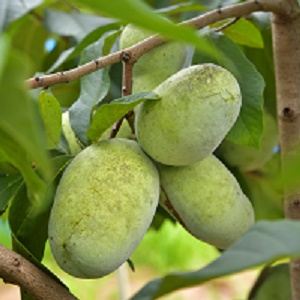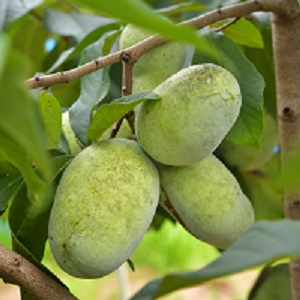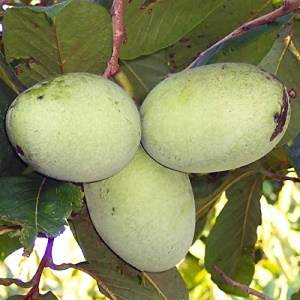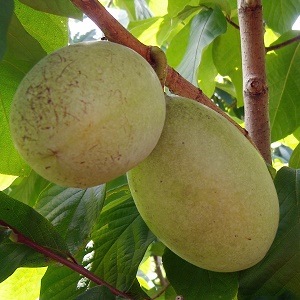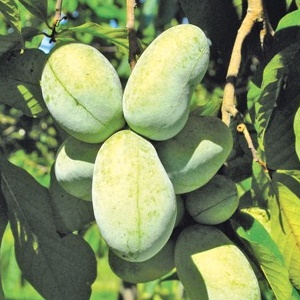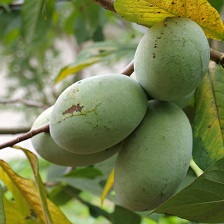Pawpaw : KSU CHAPPELL™ 20-30cm (8-12") 1 litre pot
$44.95
Kentucky State has another knockout champion with KSU-Chappell just released Sept. 2018! Pawpaw enthusiasts such as Michael Judd and Cliff England are profuse in their praise of it's thick, creamy texture and rich complex flavour. It also gets high marks for production, fruit size, vigorous growth and healthy foliage.
NEEDS A POLLENIZER | ZONE 5 | HARVEST: LATE SEPT.
Other products in this zone
Growing Tips
In most cases, we recommend planting bareroot fruit trees at their permanent site as soon as you get them. However, the trees in this section of the catalogue (Pawpaws, Persimmons and Jujubes) will often benefit from spending a few more years in a pot. Since these species do not take as well to bareroot handling, we receive them as very small trees in pots. We suggest you repot them in a 2 or 3 gallon container and grow them for several seasons. Pawpaws in particular, will appreciate this, as the tender young trees will prosper much more if you can keep them out of direct sunlight. This way you also have the option of overwintering them in your garage until they are bigger and stronger.
See Page 80 for 3 gallon Root Trapper® Containers.

